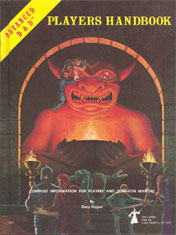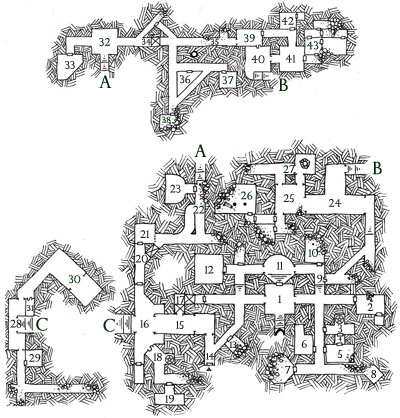 Common meme: Art is eating our RPG books. The number of illustrations have been increasing per page. Customers won’t buy books without a lot of art in them. And this is totally new. Didn’t used to be this way. Back in the day we were willing to buy books even if they didn’t have any art at all.
Common meme: Art is eating our RPG books. The number of illustrations have been increasing per page. Customers won’t buy books without a lot of art in them. And this is totally new. Didn’t used to be this way. Back in the day we were willing to buy books even if they didn’t have any art at all.
Really?
Fact check time.
OD&D White Box: 44 illustrations, 116 half pages = 0.37 illustrations per page (0.75 per full page)
AD&D1 PHB: 35 illustrations, 128 pages = 0.27 illustrations per page
AD&D1 DMG: 50 illustrations, 240 pages = 0.20 illustrations per page
AD&D1 MM: 246 illustrations, 112 pages = 2.19 illustrations per page
AD&D 1st Edition Total: 0.61 illustrations per page
AD&D2 PHB: 95 illustrations, 256 pages = 0.37 illustrations per page
AD&D2 DMG: 81 illustrations, 192 pages = 0.42 illustrations per page
AD&D2 MM: 326 illustrations, 384 pages = 0.84 illustrations per page
AD&D 2nd Edition Total: 0.60 illustrations per page
D&D3.5 PHB: 68 illustrations, 317 pages = 0.21 illustrations per page
D&D3.5 DMG: 71 illustrations, 320 pages = 0.22 illustrations per page
D&D3.5 MM: 203 illustrations, 320 pages = 0.63 illustrations per page
D&D3.5 Total: 0.36 illustrations per page
D&D4 PHB: 67 illustrations, 317 pages = 0.21 illustrations per page
D&D4 DMG: 48 illustrations, 221 pages = 0.22 illustrations per page
D&D4 MM: 208 illustrations, 288 pages = 0.72 illustrations per page
D&D4 Total: 0.39 illustrations per page
Exact counts may vary. (For example, I didn’t count the 23 illustrations on pg. 21 of Volume 3 of the White Box depicting various types of construction as separate illustrations. I just counted the whole pageonce.) But the conclusion is self-evident: The number of illustrations per full page in D&D’s core rulebooks has actually decreased over time. If we want to talk about black-and-white art vs. full color art or the merits of border art, let’s have it. But RPGs have been art-rich literally since day one.
“But, Justin,” you say. “That’s just D&D. What about Traveller? The little black box practically had no illustrations at all!”
True. The original Traveller black box only has 3 illustrations in 150 half pages. On the other hand, the relatively recent Shock: Social Science Fiction has 3 illustrations in 90 two-third pages. Books that feature stark, austere layouts haven’t exactly vanished off the face of the planet.
Now, if there is one trend that has appeared in the last 20 years its the technique of putting a big piece of art behind the text. And I think we can all agree that this technique should be taken out into the desert and left to die.
But if you want to complain about how much gosh-darn art there is in roleplaying games these days?
Check your facts.












